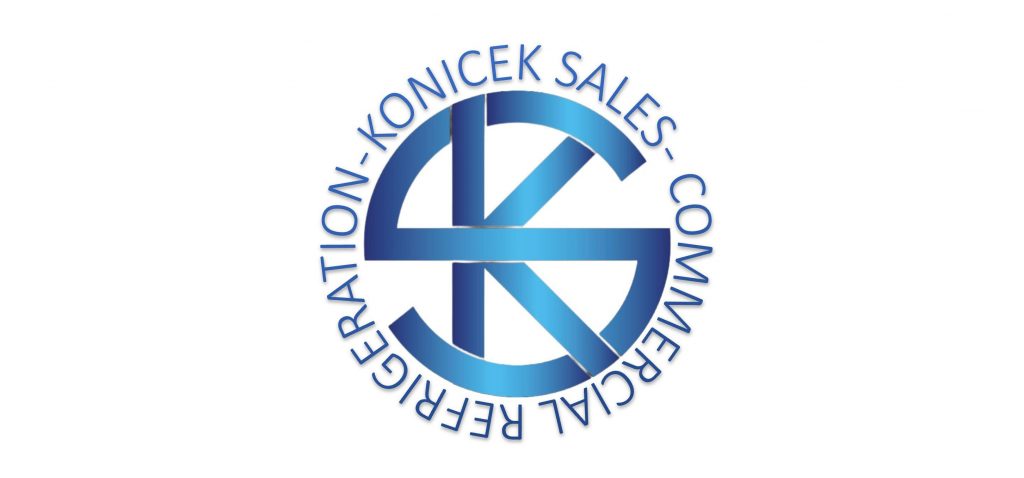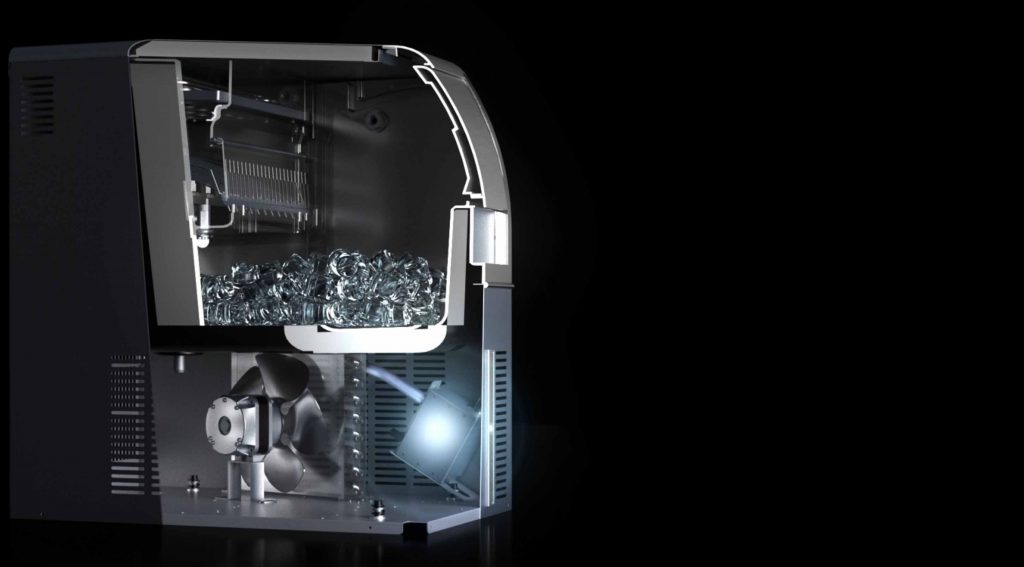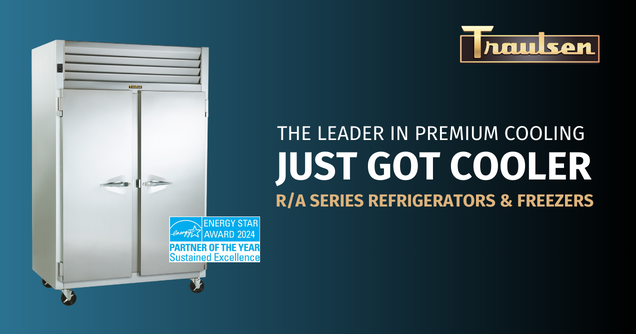
An ice maker, also known as ice machine or ice generator is a dedicated utility item that generates ice. Ice makers come in many types, shapes, and forms, but regardless of model, they all share a similar architectural layout and contain common components such as evaporators, throttle valves, and compressors.
The role of the compressors is to cold compress low-pressure vapor and transform it into high-pressure refrigerant vapor, which then is transported to the condenser. Afterward, this vapor is condensed and turned into high-pressure liquid, which is drained out through the throttle and turned into low-pressure liquid. Finally, the liquid is transported back into the evaporator, and through heat exchange, ice is created.
All ice machines, regardless of type and model, function by replicating one version or the other of this process. However, some things are starting to change, industry-wide. Here are the industry trends and forecasts.
How ice makers became big players
The worldwide shift from an economical landscape dominated mainly by blue collar jobs (industrial, construction, and so on and so forth) to a predominantly white collar one dominated by service sector jobs and an increasingly sedentary lifestyle has led to the development and growth of fast food chains.
Due to the nature of the jobs themselves (the majority of them being sedentary office jobs), a lack of time to cook, and the growing number of people with high amounts of disposable income, big fast food chains were faced with the need to store perishable items, such as food and food ingredients.
Moreover, the founding of high-quality specialized websites, such as Ice Maker Pro, has contributed to the entrance of these utility items into the public consciousness, making many regular people, who would have otherwise chosen ice trays or ice bags to cover their ice needs, more accepting towards buying a dedicated ice machine. These factors and many others that are too complex to cover in a single article are responsible for the continuous growth of the global ice maker market.
The ice maker market is on the rise. The market can be segmented as follows:
- Middle East & Africa
- Latin America
- Asia Pacific
- North America
- Europe
The biggest market out of all is arguably North America, where it is still experiencing growth for the foreseeable future. In 2015, North America occupied 38 % of the total global market share, according to ReportsnReports.com’s Global Ice Maker Market 2015-2019 research report. The reasons why ice makers caught on better in North America than in other regions are related more to the changing social mores and economical landscape of the country, rather than smart marketing campaigns. From a social perspective, says Harvard Health, an increasing number of Americans are adopting and developing outdoor eating habits.
This, coupled with the fact that North America already had an economical ‘’framework’’ (or infrastructure) sustained by the presence of large number of restaurants, retail chains, and supermarkets, has led to the growth of the ice maker market in North America.
On a brand level, the leading global vendors are the following:
- Ice-O-Matic
- Manitowoc Ice
- Scotsman Ice Machines
- Hoshizaki
The market can be further segmented by product type as follows:
- Ice nugget
- Ice flake
- Ice cube
Another factor that led to the rise of the ice maker market is the increasing need for these machines in various scientific fields, such as biochemistry, biotechnology, genetic engineering, microbiology and the storage of biological samples. Moreover, the growing usage of ice makers for cold compression therapy is another factor that contributes to the development of this market.
The challenges faced by the ice maker market
The main challenge that the ice maker market is still facing is high initial investment. Setting up, installing and providing ice making machines that are appropriate for a particular business or establishment – a hospital will obviously need other types of ice makers with different configurations than, let us say, a corner café – is a costly endeavor, requiring both professional expertise and serious, long-term investments.
This, coupled with the fact that some businesses prefer using an in-house ice production device rather than purchasing a premade model, might prove challenging to the industry as a whole, who is forced to produce models that accommodate the particular needs of an establishment.
However, the global demand for cold drinks is, according the 2017 Soft Drinks Global Overview report from Euromonitor, on the rise and will stay this way for the foreseeable future. This trend has proved to be fertile ground for the development of the ice maker market. Moreover, the growth of the healthcare industry and the overall trend of using ice for various medical and patient care procedures offers a great opportunity for the ice maker market to expand.
Ice maker industry forecasts
Studies show that North America will hold its status of dominance in the ice machine market up until 2021. A study from IMARCgroup conducted in 2016 revealed that the market was dominated mainly by the ice cube machine. The reasons are quite obvious – foodservice establishments, whether we are talking about bars, restaurants, cafes, use ice cubes for strong drinks.
However, the same study revealed that the ice cube market will grow even bigger as developing economies in the world, such as India, Brazil, and several other Latin American countries, will see an expansion in the number of juice bars, hotels, restaurants, and other big corporate fast food chains.
Another market that is expected to grow shortly is the Asian Pacific area, due to similar reasons. The rising quality of life in this region, coupled with the meteoric development of the restaurant and fast foodservice industry, have naturally led to the growth of the ice maker market in this particular region.
On the whole, financial analysts estimate that by 2023, the market value will exceed 5 billion dollars. Due to this rapid growth, experts predict that the industry will see something of a renaissance that will incentivize companies to innovate and come up with new, groundbreaking technologies that will focus on an even greater user intuitiveness and network connectivity.
Conclusion
While North America holds (and will continue to hold for the foreseeable future) a large majority of the market shares in terms of sales, the spread of foodservices industries in developing countries and other economic and social factors will help the ice maker market grow beyond the American continent. As for other forecasts, industry experts at IMARCgroup estimate that the ice maker market will exceed $5 billion, which will lead to the development of new technologies that will change the way we perceive and interact with these utility items.
Stanley Hughes is a bartender from Boston, Massachusetts with a bachelor’s degree in Human Nutrition. His specialist IceMakerPro website reviews different types of ice machines: icemakerpro.com




